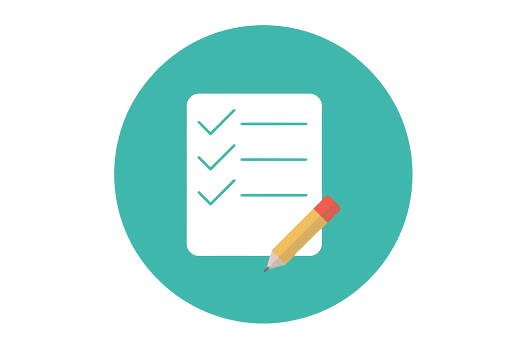Your Shopping Cart

Enroll now to become a Design Patterns expert with EDTIA Design Patterns Certification Training, upgrade your skills, and lead your professional life.
This course is designed to give you an understanding of Design Patterns, to enhance your skills, aiming to be an efficient Software Architect and develop some highly scalable and maintainable applications.
In software engineering, a design pattern is a general repeatable resolution to a generally occurring issue in software design. A design pattern isn't a concluded design that can be transformed directly into code; it is a description or template for how to crack an issue that can be utilized in many different situations.
Design patterns are trained in design classes for CS. They aren't essential, but they are accommodating if you can find analogous situations to have a solution that has been thought through. It also allows programmers to communicate more efficiently, and you can talk to your coworker about the patterns.
Design patterns are programming independent language techniques for decoding a common problem. That means a design pattern describes an opinion, not a particular execution. You can make your code more flexible, reusable, and maintainable using design patterns.
Design patterns help encourage more accessible program modifications and object reusability. Loosely coupled objects are easier to reuse and change, and keeping objects small and specialized promotes loose coupling. Design patterns are created with many miniature specialized objects.
Design Patterns are classified primarily into three categories: Creational Design Pattern, Structural Design Pattern, and Behavioral Design Pattern. These have differed based on their level of detail, complexity, and scale of applicability to the entire system being designed.
Design patterns are programming language techniques for decoding a common problem. That means a design pattern describes an idea, not a precise execution. Using design patterns, you can make your code more flexible, reusable, and maintainable.
Design patterns are a tool to communicate, identify, and remember solutions to common problems. Each pattern names, explains, and evaluates a resolution to an ordinary problem. Each design pattern has four essential elements: Behavioral, Creational, and Structural Diagram.
In this module, you will understand the basic overview of OOP concepts and implementation of DAO & Factory Pattern. (a) Object Oriented Programming concepts (b) Unified Modeling Language (c) Introduction to Design Patterns (d) SOLID Principles (SRP, OCP, LSP, IS, DI)
In this module, you will learn the Creational Design Pattern concepts and application using Java code examples.
In this module, you will be able to learn Structural Design Pattern concepts and application using Java code examples.
In this module, you will learn Behavioral Design Pattern concepts and application using Java code examples.
In this module, you will learn Concurrency Design Pattern concepts and application using Java code examples.
In this module, we will explain the negative consequences that arises out by applying wrong design patterns to a problem.
learn the fundamentals that need to be considered while applying the Design Pattern principles learned in previous modules.
you will be able to apply all the concepts used in previous modules to develop a scalable design for a given project.
Edtia Support Team is for a lifetime and will be open 24/7 to help with your questions during and after completing the Design Patterns Certification Training.
Design patterns enable the promotion of easier program changes and object reusability. Loosely coupled objects are easier to reuse and change, and keeping objects small and specialized promotes loose coupling. Design patterns are created with many tiny specialized objects.
To better understand the Design Patterns Certification Training, one must learn as per the curriculum.
Design patterns provide general solutions, documented in a format that doesn't require specifics tied to a particular problem. In addition, patterns allow creators to communicate utilizing well-known, well-understood names for software relations.
Design patterns are a toolkit of tried and tested resolutions to everyday problems in software design. Even if you never encounter these problems, knowing patterns is still helpful because it teaches you how to solve problems using object-oriented design principles.
Design patterns are unique, and when used correctly, they make code more maintainable and easier to read and work with. Part of being a good programmer is knowing when to stop and seeing that further refactoring will outweigh the benefits.


Every certification training session is followed by a quiz to assess your course learning.

The Mock Tests Are Arranged To Help You Prepare For The Certification Examination.

A lifetime access to LMS is provided where presentations, quizzes, installation guides & class recordings are available.

A 24x7 online support team is available to resolve all your technical queries, through a ticket-based tracking system.

For our learners, we have a community forum that further facilitates learning through peer interaction and knowledge sharing.

Successfully complete your final course project and Edtia will provide you with a completion certification.
Design Patterns Training demonstrates that the holder has the proficiency and aptitudes to work with Design Patterns.
By enrolling in Design Patterns and completing the module, you can get the Edtia Design Patterns Training Certification.
A design pattern delivers a general reusable answer for the common problems in software design. The pattern generally shows relationships and interactions between classes or objects. The idea is to speed up the growth process by supplying well-tested, proven development/design paradigms.
Design patterns are a toolkit of tried and tested resolutions to everyday problems in software design. Even if you never encounter these problems, knowing patterns is still helpful because it teaches you how to solve problems using object-oriented design principles.
